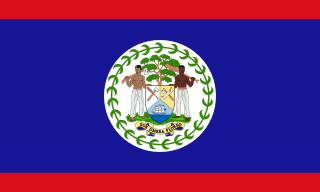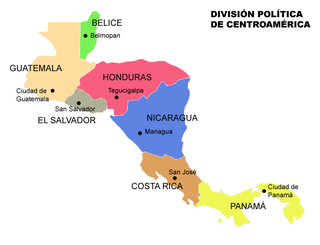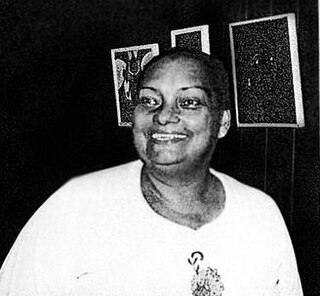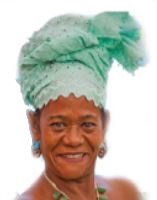Related Research Articles

The Mosquito Coast is an area along the eastern coast of present-day Nicaragua and Honduras. It was named after the local Miskito Nation and was long dominated by British interests and known as the Mosquito Kingdom. From 1860 suzerainty of the area was transferred to Nicaragua with the name Mosquito Reserve, and in November 1894 the Mosquito Coast was militarily incorporated into Nicaragua. However, in 1960, the northern part was granted to Honduras by the International Court of Justice.

The music of Belize has a mix of Creole, Mestizo, Garìfuna, Mayan and European influences.
Afro–Latin Americans or Black Latin Americans are Latin Americans of sub-Saharan African heritage. African heritage is common throughout Latin America.

The South Caribbean Coast Autonomous Region is one of two autonomous regions in Nicaragua. It was created along with the North Caribbean Coast Autonomous Region by the Autonomy Statute of 7 September 1987 through a division of the former Zelaya Department. It covers an area of 27,260 km2 (10,530 sq mi) and has a population of 420,935. The capital is Bluefields. Bordering the Caribbean Sea, it contains part of the region known as Mosquitia.

Culture of Nicaragua is a fusion of Mesoamerican, Chibcha, and Spanish influence. The western part was colonized by the Spanish and its culture is similar to western El Salvador in that western Nicaragua was dominated by the Nahua people, specifically the Nicarao, a branch of the Pipil people. Nahua heritage can still be seen in Nicaraguan culture especially in its cuisines, the etymologies of many of its place names, and even DNA analysis. While western Nicaragua is mostly Indigenous of Nahua or Oto-manguean origin, eastern Nicaragua is mostly of Chibcha, Miskito, and African origin.

Nicaraguans are people inhabiting in, originating or having significant heritage from Nicaragua. Most Nicaraguans live in Nicaragua, although there is also a significant Nicaraguan diaspora, particularly in Costa Rica and the United States with smaller communities in other countries around the world. There are also people living in Nicaragua who are not Nicaraguans because they were not born or raised in Nicaragua nor have they gained citizenship.

Bluefields is the capital of the South Caribbean Autonomous Region in Nicaragua. It was also the capital of the former Kingdom of Mosquitia, and later the Zelaya Department, which was divided into North and South Caribbean Coast Autonomous Regions. It is located on Bluefields Bay at the mouth of the Bluefields River in the municipality of the same name.
Kukra Hill(Loma de los Kukras) is a municipality in the South Caribbean Coast Autonomous Region in the Republic of Nicaragua. It was granted municipal status in 1989; before then, it was administratively part of the municipality of Bluefields, in the former department of Zelaya.

Pearl Lagoon is a municipality that is often time called just Lagoon and was historically known as English Bank. It is located in the South Caribbean Coast Autonomous Region of Nicaragua. It is the most important town of the largest coastal lagoon also by the name of Pearl Lagoon in the South Caribbean Coast Autonomous Region of Nicaragua and which the name of the town is derived from. As of 2022, Pearl Lagoon Municipality had a population of 21,360.

The Corn Islands are two islands about 70 kilometres (43 mi) east of the Caribbean coast of Nicaragua, constituting one of 12 municipalities of the South Caribbean Coast Autonomous Region of Nicaragua. The official name of the municipality is Corn Island.
Belizean Creoles, also known as Kriols, are a Creole ethnic group native to Belize.

Central America is a subregion of the Americas formed by six Latin American countries and one (officially) Anglo-American country, Belize. As an isthmus it connects South America with the remainder of mainland North America, and comprises the following countries : Belize, Guatemala, Honduras, El Salvador, Nicaragua, Costa Rica, and Panama.

This is an index of Central America-related articles. This index defines Central America as the seven nations of Belize, Costa Rica, El Salvador, Guatemala, Honduras, Nicaragua, and Panama.

George Frederic Augustus I served from 1801 to 1824 as a mostly titular king of the mixed-race Miskito, as the Spanish called them, a Native people of Honduras. Although the title and office were hereditary, the "kings" held no real power, with all political power held by British superintendents in the region instead.

Afro-Nicaraguans are Nicaraguans of Sub-Saharan African descent. Five main distinct ethnic groups exist: The Creoles who descend from Anglo-Caribbean countries and many of whom still speak Nicaragua English Creole, the Miskito Sambus descendants of Spanish slaves and indigenous Central Americans who still speak Miskito and/or Miskito Coast Creole, the Garifunas descendants of Zambos expelled from St. Vincent who speak Garifuna, the Rama Cay zambos a subset of the Miskito who speak Rama Cay Creole, and the descendants of those enslaved by the Spanish.

Afro-Hondurans or Black Hondurans are Hondurans of Sub-Saharan African descent. Research by Henry Louis Gates and other sources regards their population to be around 1-2%. They descended from: enslaved Africans by the Spanish, as well as those who were enslaved from the West Indies and identify as Creole peoples, and the Garifuna who descend from exiled zambo Maroons from Saint Vincent. The Creole people were originally from Jamaica and other Caribbean islands, while the Garifuna people were originally from Saint Vincent and the Grenadines. Garifunas arrived in the late seventeen hundreds and the Creole peoples arrived during the eighteen hundreds. About 600,000 Hondurans are of Garífuna descent that are a mix of African and indigenous as of Afro Latin Americans. Honduras has one of the largest African community in Latin America.
This is a compilation of traditional dances from Nicaragua.

June Beer (1935–1986) was a Nicaraguan naïve artist, who gained national and international acclaim for her works depicting African and feminist themes. She was also the first woman poet of Nicaragua's Atlantic coast and produced works in Miskito Coast Creole, English and Spanish. The Nicaraguan government protected four of her paintings—Fruit Seller, In Memory of Efie Irene, They Dance and Woman Working—by declaring them as part of the national patrimony. Removing them from the country is illegal.

Leela VernonMBE was a Belizean cultural icon noted for her contributions to preserving Creole culture in the country. She was awarded the title "Queen of Brukdown", received the Order of the British Empire for promoting Creole culture and music, and was named the Brukdown Artist of the Year in 2004. She was honored as National Hero in 2016 by the National Institute of Culture and History.
References
- ↑ Rivas Sotelo, Adelayde (2007). "Al rescate del Palo de mayo". La Prensa (in Spanish). Archived from the original on 2007-09-14. Retrieved 2007-07-26.
- ↑ NicaTour.http://www.nicatour.net/en/nicaragua/palo-de-mayo.cfm
- ↑ John Otis report to The Washington Times, 1993. Pg 319 Taylor, Deborah Robb. The Times & Life of Bluefields. [1st ed. Managua: Academia de Geografía e Historia de Nicaragua, 2005.
- ↑ Taylor, Deborah Robb. The Times & Life of Bluefields. [1st ed. Managua: Academia de Geografía e Historia de Nicaragua, 2005. Pg. 320
- 1 2 Flores, Yadira (2004). "Palo de Mayo: Bailando alrededor de un árbol". El Nuevo Diario (in Spanish). Archived from the original on 2007-07-04. Retrieved 2007-07-26.
- ↑ Berman, Joshua. Wood, Randall. "Moon Nicaragua." Avalon Travel. ed 3. 2008.
- 1 2 3 T M Scruggs. ""Let's enjoy as Nicaraguans": The use of music in the construction of a Nicaraguan national consciousness. " Ethnomusicology 43.2 (1999): 297-321. Research Library, ProQuest. Web. 11 May. 2010.
- ↑ Otis in Taylor, Deborah Robb. The Times & Life of Bluefields. [1st ed. Managua: Academia de Geografía e Historia de Nicaragua, 2005. Pg. 320
- ↑ "Bluefield's Pulse". May Pole History - Rescuing Our Culture. Retrieved 14 July 2020.
- ↑ Mr. Percy Spence in Taylor, Deborah Robb. The Times & Life of Bluefields. [1st ed. Managua: Academia de Geografía e Historia de Nicaragua, 2005.